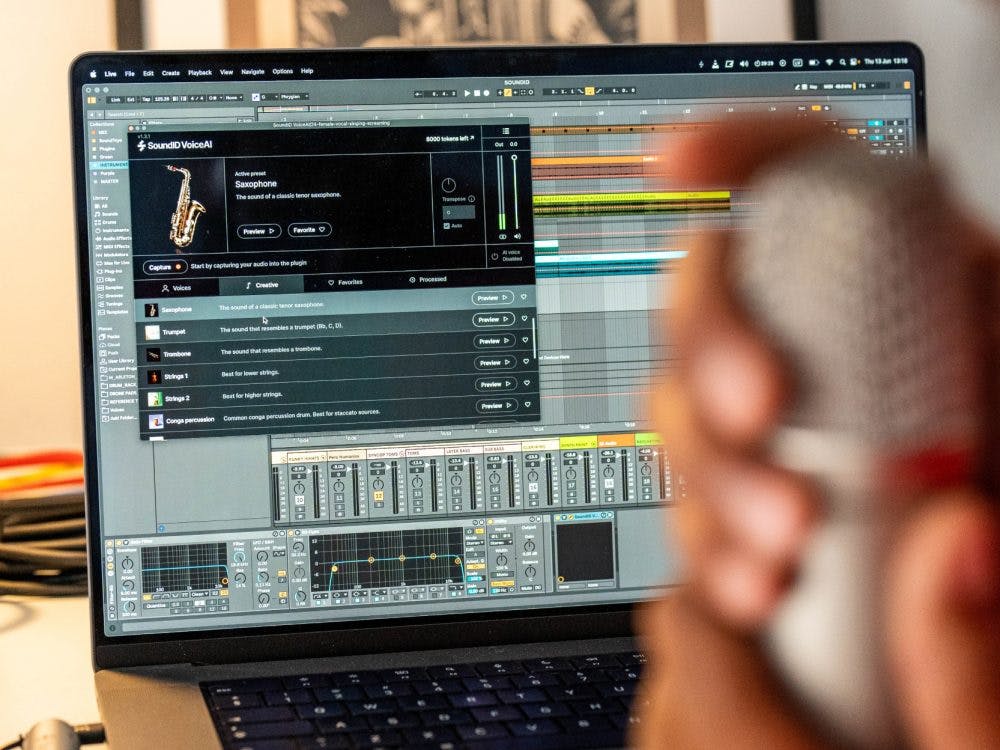AI instrument presets in music production software use machine learning algorithms to intelligently adapt sound parameters based on your musical context. Unlike traditional static presets, these smart templates analyse elements like tempo, key, and genre to automatically adjust settings, creating more dynamic and contextually appropriate sounds that respond to your specific musical needs.
Understanding AI instrument presets in modern music production
AI instrument presets represent a significant shift in how we approach sound design and music creation. These intelligent tools have transformed traditional workflows by introducing adaptive capabilities that respond to musical context rather than simply applying fixed settings.
Modern music production software increasingly incorporates these AI-driven solutions to streamline creative processes. The technology analyses your input audio and musical elements to make informed decisions about parameter adjustments, essentially acting as an intelligent assistant that understands musical context.
This innovation has particularly impacted areas like vocal processing and voice-to-instrument software, where AI can transform hummed melodies into orchestral arrangements or convert vocal tracks into entirely different instruments. The result is faster ideation and more creative possibilities for producers at all levels.
What exactly are AI instrument presets?
AI instrument presets are intelligent sound templates that use machine learning to adapt their parameters based on the audio input and musical context they receive. Unlike traditional presets with fixed settings, these tools actively analyse and respond to your music.
The core components include trained neural networks that recognise musical patterns, adaptive parameter systems that adjust settings automatically, and contextual awareness algorithms that understand genre, tempo, and harmonic content. These elements work together to create sounds that feel naturally integrated with your production.
These presets function as dynamic sound processors that learn from vast databases of musical examples. When you apply an AI preset, it doesn’t simply load predetermined settings but instead calculates the most appropriate parameter values based on what it detects in your audio signal.
How do AI presets analyse and adapt to your music?
AI presets use sophisticated machine learning algorithms to examine multiple aspects of your audio input simultaneously. The system analyses tempo, pitch content, harmonic structure, and even genre characteristics to determine optimal parameter settings.
The analysis process typically involves spectral analysis to understand frequency content, onset detection for rhythmic elements, and pitch tracking for melodic components. This information feeds into trained models that have learned from thousands of musical examples to predict appropriate adjustments.
For example, when processing vocals with AI music production tools, the system might detect the singer’s range and timbre, then adjust formant settings, EQ curves, and compression parameters to enhance the natural characteristics while maintaining musical coherence with the backing track.
What makes AI presets different from traditional presets?
Traditional presets offer static, one-size-fits-all solutions that apply the same settings regardless of your input material. AI presets, by contrast, provide dynamic responses that adapt to each unique audio signal and musical context.
| Traditional Presets | AI Presets |
|---|---|
| Fixed parameter values | Adaptive parameter adjustment |
| No input analysis | Intelligent audio analysis |
| Generic sound results | Context-aware processing |
| Manual tweaking required | Automatic optimisation |
The contextual awareness of AI presets means they can recognise when you’re working with a ballad versus an uptempo track and adjust processing accordingly. This intelligence extends to understanding the difference between lead vocals and backing vocals, or between a solo instrument and ensemble playing.
How do you get the best results from AI instrument presets?
Achieving optimal results with AI presets starts with providing clean, well-recorded input material. The quality of your source audio directly impacts how effectively the AI can analyse and process your content.
Record dry signals without excessive reverb or processing when possible, as this gives the AI cleaner information to work with. For vocal processing, ensure proper microphone technique and avoid extreme background noise that might confuse the analysis algorithms.
Understanding preset parameters helps you guide the AI’s decisions. Many AI presets offer intensity controls or style parameters that let you influence the processing direction whilst maintaining the intelligent adaptation capabilities.
Combining AI presets with manual adjustments often yields the best results. Use the AI preset as your starting point, then fine-tune specific parameters to match your artistic vision. This hybrid approach leverages both artificial intelligence and human creativity.
Key takeaways for using AI presets in your productions
AI instrument presets offer significant advantages for modern music producers, including faster workflow, more contextually appropriate results, and expanded creative possibilities. These tools excel at handling complex processing decisions that would traditionally require extensive manual adjustment.
The technology works best when you understand its capabilities and limitations. AI presets shine with monophonic sources and clear audio signals but may struggle with heavily processed or polyphonic material. Knowing these boundaries helps you choose the right tool for each situation.
The future of music production increasingly involves collaboration between human creativity and artificial intelligence. We at Sonarworks continue developing these technologies to bridge the gap between technical precision and artistic expression, ensuring that AI serves creativity rather than replacing it.
If you’re ready to get started, check out VoiceAI today.



